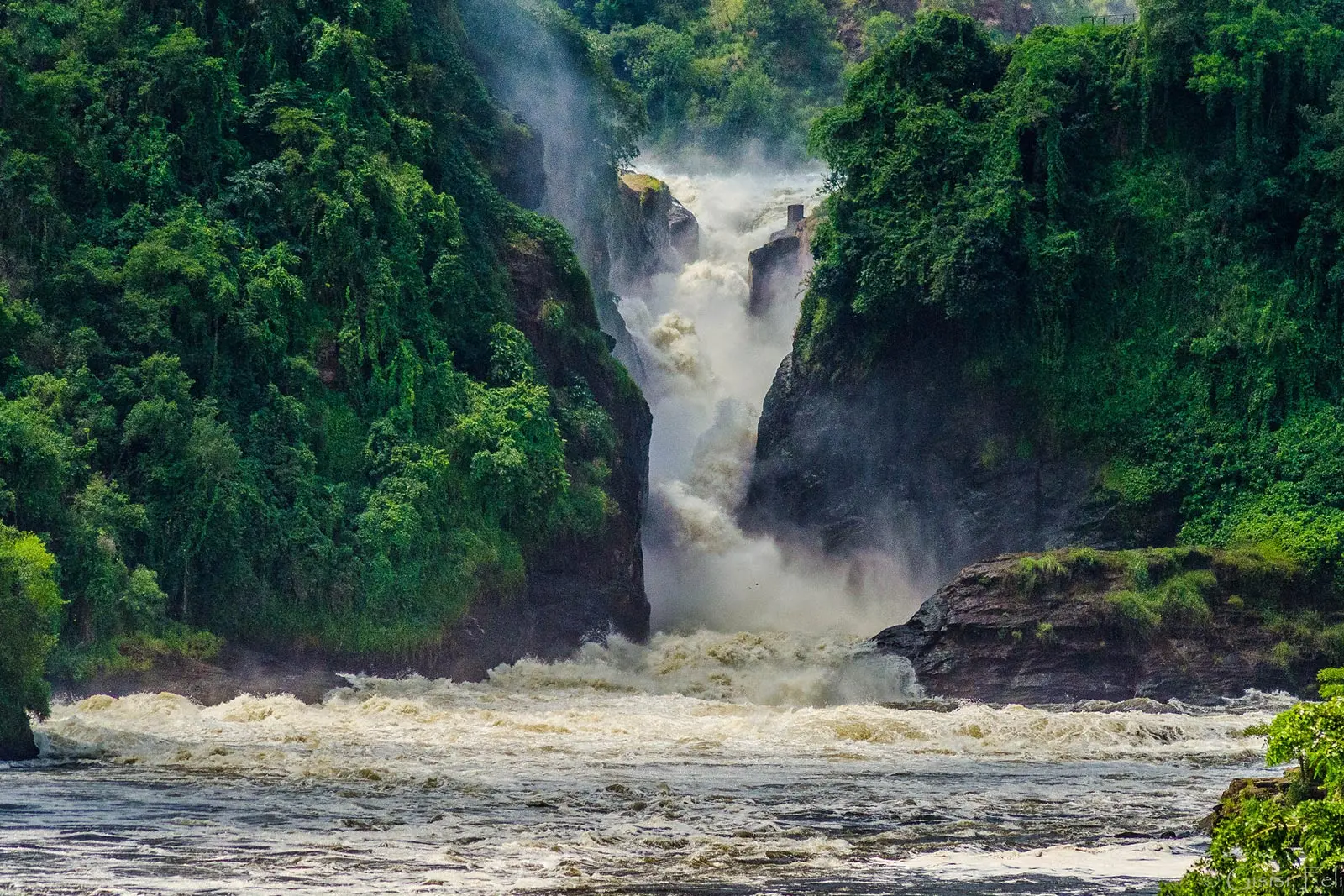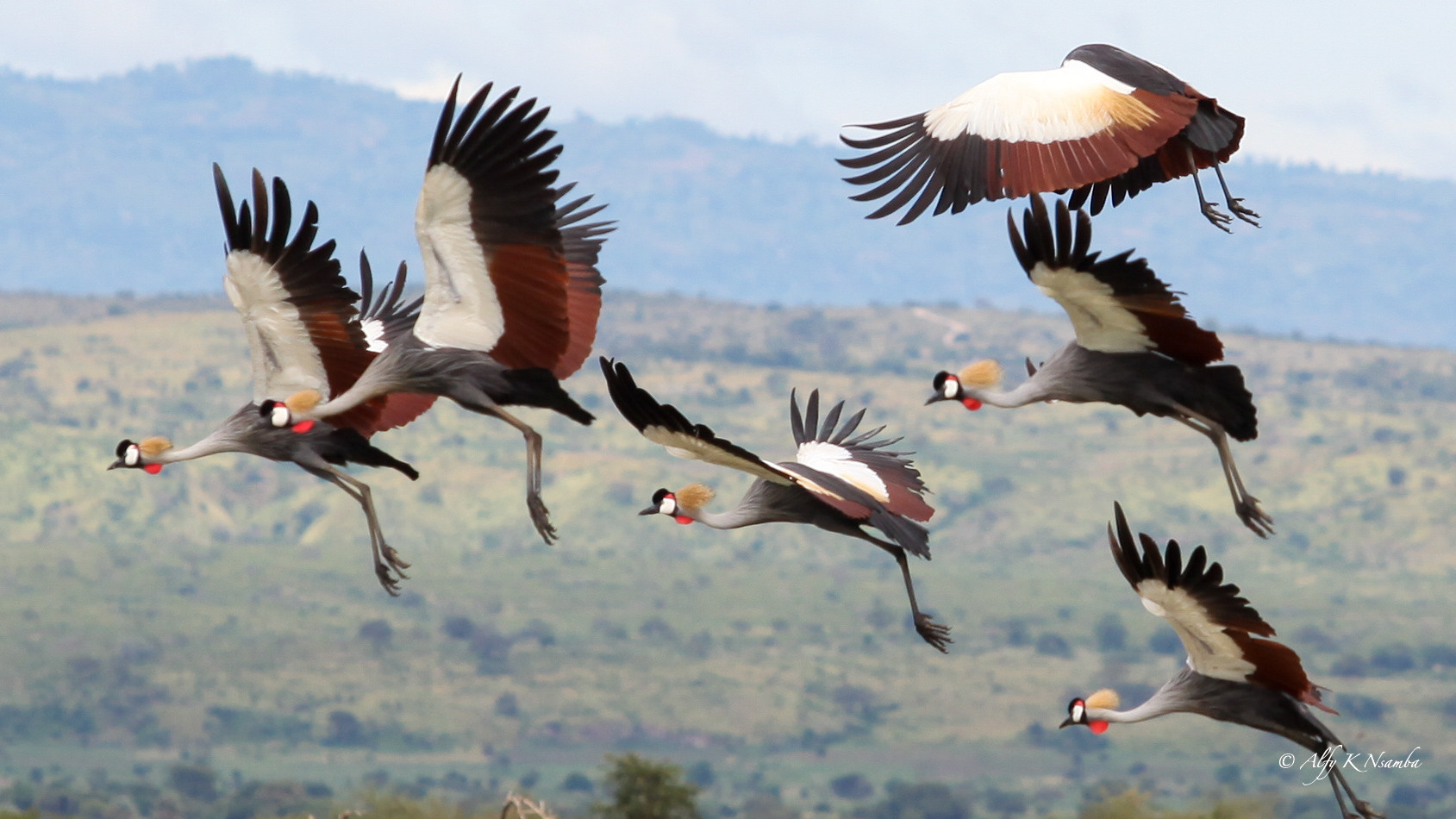Embarking on a bird watching in Bwindi Impenetrable National Park adventure is an experience that will ignite your passion for ornithology. As you navigate through the lush forests and misty valleys, you’ll be greeted by the melodious calls and vibrant plumage of over 350 bird species. Nestled in southwestern Uganda, this UNESCO World Heritage Site is renowned for its rich biodiversity, particularly its population of rare and endangered mountain gorillas.
From the endemic Albertine Rift species to the migratory birds that grace the park, Bwindi is a bird lover’s paradise. The early morning hours provide the perfect opportunity to witness the forest come alive with the sights and sounds of these magnificent creatures. With binoculars in hand, you’ll have the chance to spot elusive forest dwellers, colorful sunbirds, and majestic raptors soaring through the canopy.
The beauty of bird watching in Bwindi extends beyond the sheer variety of species. It is a journey of discovery and appreciation for the delicate balance of nature. As you observe these feathered wonders in their natural habitat, you’ll gain a deeper understanding of the intricate ecosystems that sustain them. The park’s commitment to conservation and preservation ensures that future generations can also marvel at the avian treasures that call Bwindi their home. So venture into the heart of Bwindi Impenetrable National Park and let the captivating world of birds captivate your senses and ignite a lifelong passion for conservation.
This article will discuss bird watching basics, best times for bird watching, locations within the park to explore, species of birds that can be seen there, equipment needed for successful birding trips and tips on how to make the most out of your visit.
Bird Watching Basics
Acquainting oneself with the fundamentals of bird observation is essential for any aspiring twitcher. Not only does understanding the basics help to prepare an individual for a successful bird watching session, but it can also be immensely helpful in tracking migration patterns and identifying different species.
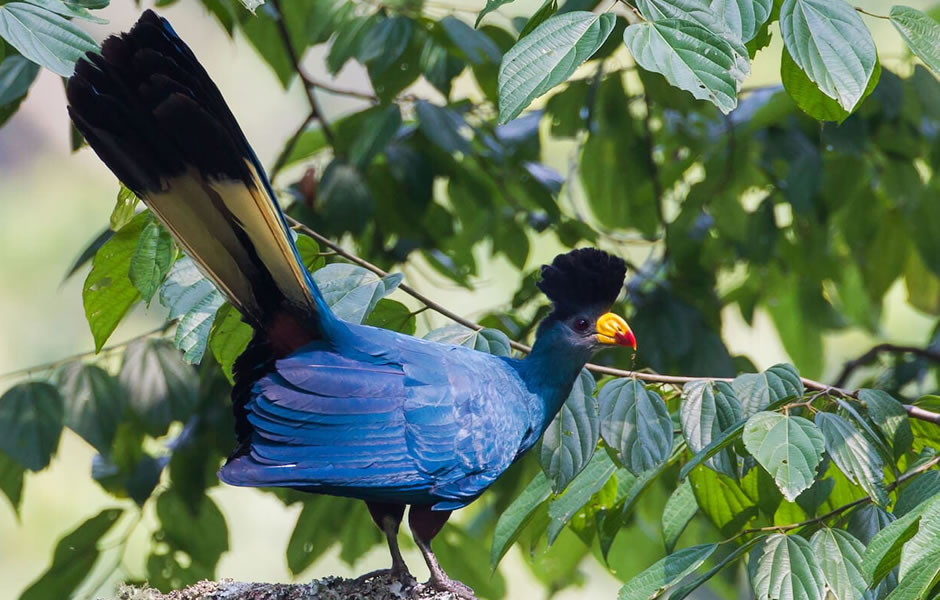
One of the most important tips is to arrive early at your destination, preferably before sunrise, in order to take advantage of dawn choruses which are when birds sing their loudest. Equally as important is bringing appropriate equipment such as binoculars or a telescope, field guides, and even a camera for recording purposes.
In the case of Bwindi Impenetrable National Park in Uganda, there are over 350 species of birds located within its borders making it one of Africa’s prime destinations for avid ornithologists. Species that can be seen include African Green Broadbill, Western Green Tinkerbird, African Crowned Eagle and Marabou Stork – just to name a few! Additionally, two Albertine Endemics: the Black-throated Seedeater and Rwenzori Batis occur here as well as several other restricted-range species from this region.
A good strategy when birding is to make use of listening posts where you can sit quietly and observe what species may fly by or nearby. With patience and diligence this technique pays off as it allows one to observe many more types of birds than just using visual sighting alone would manage. Furthermore it provides an opportunity to hear some truly remarkable songs that will likely leave a lasting impression on any outdoor enthusiast.
Best Time for Bird Watching
Visiting the park during certain times of year can provide optimised opportunities to observe and admire its avian inhabitants. Bird watching in Bwindi Impenetrable National Park is best done at certain times of the year, when the conditions are more suitable for identifying birds, managing time efficiently, and selecting binoculars.
The dry season from late June to September is generally regarded as one of the best times for bird watching in Bwindi. During this period there are fewer leaves on trees making it easier to spot birds that are otherwise hidden by foliage, while migratory species from Europe and Asia arrive as well. This time offers a great variety of bird species that can be observed and admired with relative ease due to the lack of precipitation.
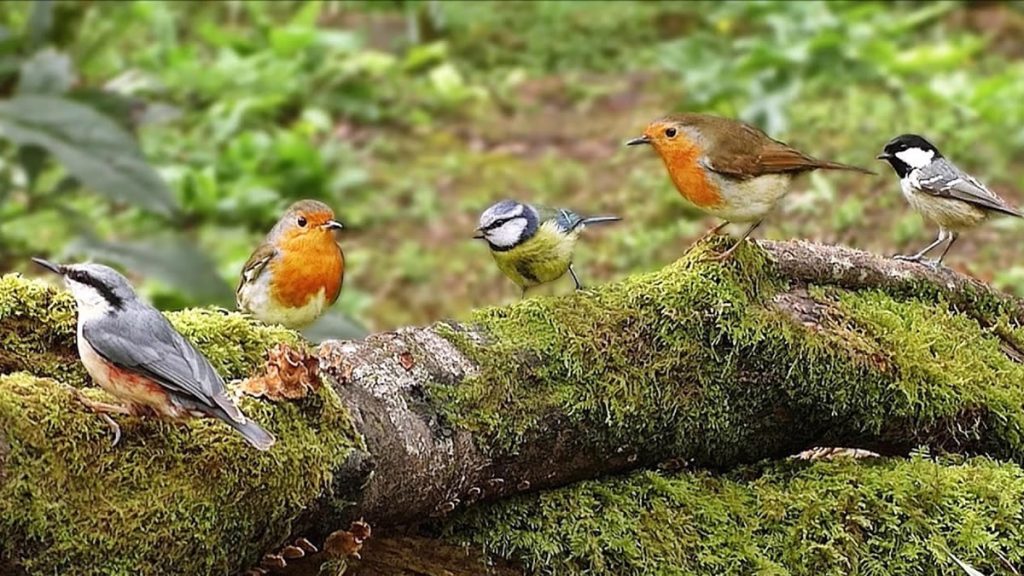
Another ideal time for bird watching is during the wet season between October and April; however, visitors should take precautions like wearing waterproof clothing or bringing an umbrella due to heavy rainfall in some areas. The rains make it difficult to spot birds because they tend to hide away due to their plumage not providing adequate protection against moisture. Despite this challenge, enthusiastic ornithologists may still be able to spot some interesting species such as Turacos or Great Blue Turaco which are more active during this season than other months.
Bird watchers should also consider taking advantage of dawn and dusk hours which offer increased activity among wildlife since most species actively search for food before sunrise or after sunset. Binoculars with higher magnifications will help visitors identify nocturnal birds that are usually camouflaged against tree trunks or branches, while also allowing observers a glimpse into the world of insects which become active during those moments too.
Bird Watching Locations in Bwindi
Bwindi Impenetrable National Park provides a unique opportunity for observers to observe avian wildlife in its natural habitat. Located in the southwestern corner of Uganda, Bwindi is home to more than 350 bird species and a variety of other wildlife.
Bird watching at Bwindi requires special viewing etiquette; visitors should be aware that some birds are sensitive to human presence and may fly away if approached too closely or startled. The weather conditions should also be taken into consideration when visiting Bwindi; while the park’s tropical climate makes it a great spot for year-round birding, heavy rains and dense mist can reduce visibility significantly during certain times of the year.
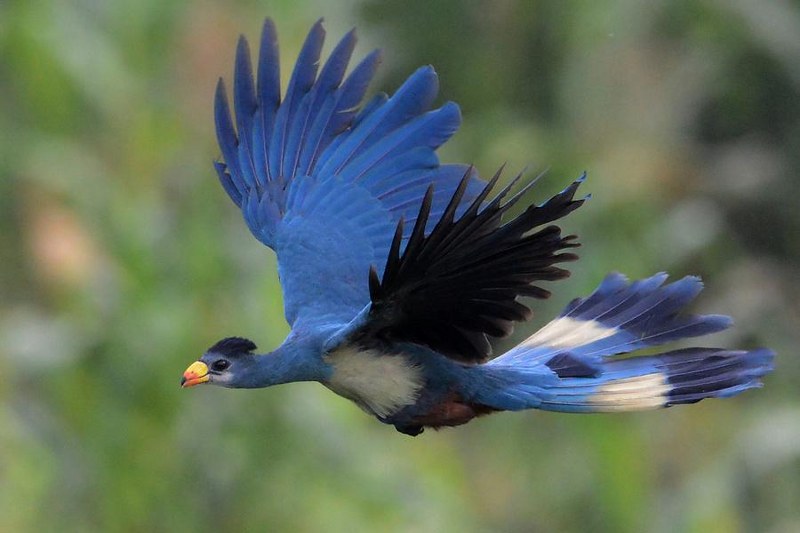
The Buhoma sector is one of the most popular areas for bird watching in Bwindi due to its easy access from Kampala as well as its high diversity of avian species. As an evergreen lowland forest, this area has been declared an Important Bird Area (IBA) by BirdLife International due to its population of rare endemic species such as Shelley’s Crimsonwing and African Green Broadbill. Other notable birds found in this region include Grey Crowned Crane, Black Bee-eater, Red-throated Alethe, African Emerald Cuckoo, Dusky Long-tailed Cuckoo and Yellow Spotted Nicator.
The Rushaga sector is another birding hot spot located along the southern border of the park. This part of the park consists mainly of montane forest that covers steep slopes with altitudes ranging from 1100 meters up to 2500 meters above sea level. Some common birds found in Rushaga include Barred Long-tailed Cuckoo, Western Bronze-naped Pigeon Mountain Wagtail and White Starred Robin. Apart from these resident species, there are also several migratory species that visit Rushaga during certain times of year including Olive Thrush, Common Stonechat and Marsh Warbler among many others.
Species of Birds in the Park
The Rushaga and Buhoma sectors of the Impenetrable National Park are home to a variety of avian species, including rare endemic species and migratory birds. In terms of biodiversity, this area is one of the most important bird watching locations in Uganda due to the presence of over 348 bird species. Bird behavior in these areas is unique, especially during mating season when the males make loud calls to attract females.
Bird watching enthusiasts can observe up to 25 Albertine Rift endemics, some of which are endangered or vulnerable species such as Grauer’s Broadbill, Shelley’s Crimsonwing and Kivu Ground Thrush. Other interesting birds that may be spotted include African Green Broadbill, Black-billed Turaco and Rwenzori Turaco amongst many others.

In addition to spotting birds in their natural habitats, visitors can also take part in guided forest walks where they will learn about the park’s rich ecology along with fascinating facts about bird mating and behavior.
Bird watchers should come prepared with binoculars for optimal viewing experience at Bwindi Impenetrable National Park.
| Name | Species | Description | Best Time to Watch |
|---|---|---|---|
| African Green Broadbill | Pseudocalyptomena graueri | A small, brightly colored bird with a green body, blue wings, and a unique bill. It is known for its distinctive song and agile flying abilities. | Year-round, early morning |
| Rwenzori Turaco | Gallirex johnstoni | A striking bird with vibrant blue and green plumage, a bushy crest, and a long tail. It is endemic to the Albertine Rift and can be found in the montane forests. | Year-round, early morning |
| Cinnamon-chested Bee-eater | Merops oreobates | A beautiful bird with cinnamon-colored chest, green wings, and a long, curved bill. It is known for its graceful flight and its habit of perching on exposed branches. | Year-round, mid-morning |
| Grauer’s Rush Warbler | Bradypterus graueri | A small, secretive bird with brown plumage and a distinctive song. It is endemic to the Albertine Rift and is often found near marshy areas. | Year-round, early morning |
| African Wood Owl | Strix woodfordii | A medium-sized owl with mottled brown plumage and piercing orange eyes. It is a nocturnal species that hunts small mammals and birds. | Year-round, evening |
| Black-billed Turaco | Tauraco schuettii | A medium-sized turaco with black plumage, a red crest, and a large yellow bill. It is found in the highland forests and is known for its loud, distinctive calls. | Year-round, early morning |
| Regal Sunbird | Cinnyris regius | A small bird with iridescent blue and green plumage and a long, curved bill. The male has a bright orange belly and throat. It is commonly seen feeding on nectar from flowers. | Year-round, throughout the day |
| African Dusky Flycatcher | Muscicapa adusta | A small, insectivorous bird with dark gray plumage and a white eye-ring. It is often seen perching on branches and catching insects in mid-air. | Year-round, throughout the day |
| Montane Oriole | Oriolus percivali | A medium-sized bird with bright yellow plumage, black wings, and a distinct call. It is found in the montane forests and is known for its skillful nest-building abilities. | Year-round, early morning |
| Rwenzori Nightjar | Caprimulgus ruwenzorii | A nocturnal bird with mottled brown plumage and large eyes. It is endemic to the Rwenzori Mountains and is best observed during nighttime excursions. | Year-round, evening and night |
| Handsome Francolin | Pternistis nobilis | A medium-sized francolin with brown plumage, a gray head, and a red bill. It is known for its distinct call and is often seen foraging on the forest floor. | Year-round, early morning |
| Black-faced Rufous Warbler | Bathmocercus rufus | A small warbler with olive-brown upperparts, a black face, and a reddish-brown breast. It is known for its secretive nature and can be found in thick undergrowth. | Year-round, throughout the day |
| Red-throated Alethe | Alethe poliocephala | A small, shy bird with brown plumage, a reddish throat, and a distinctive song. It is often seen hopping on the forest floor in search of insects. | Year-round, early morning |
| Bar-tailed Trogon | Trogon fasciatus | A medium-sized bird with metallic green upperparts, a barred tail, and a white breast. It is known for its low, resonant call and is found in the forested areas. | Year-round, early morning |
| Striped-breasted Tit | Parus fasciiventer | A small bird with a black and white striped breast, gray upperparts, and a black cap. It is often seen in mixed-species foraging flocks. | Year-round, throughout the day |
| Kivu Ground Thrush | Zoothera tanganjicae | A medium-sized thrush with brown plumage, a pale throat, and a distinctive song. It is often found on the forest floor, foraging for invertebrates. | Year-round, early morning |
| Dusky Crimsonwing | Cryptospiza jacksoni | A small finch with gray-brown plumage, a crimson face, and pink underparts. It is found in the bamboo zone and is known for its unique courtship display. | Year-round, mid-morning |
| Strange Weaver | Ploceus alienus | A medium-sized weaver bird with yellow underparts, a black face, and a long, pointed bill. It constructs elaborate, bottle-shaped nests. | Year-round, throughout the day |
| Mountain Yellow Warbler | Chloropeta similis | A small warbler with bright yellow plumage and a distinct black mask. It is often found near water sources and is known for its melodious song. | Year-round, early morning |
| Regal Sunbird | Cinnyris regius | A small bird with iridescent blue and green plumage and a long, curved bill. The male has a bright orange belly and throat. It is commonly seen feeding on nectar from flowers. | Year-round, throughout the day |
| African Dusky Flycatcher | Muscicapa adusta | A small, insectivorous bird with dark gray plumage and a white eye-ring. It is often seen perching on branches and catching insects in mid-air. | Year-round, throughout the day |
| Montane Oriole | Oriolus percivali | A medium-sized bird with bright yellow plumage, black wings, and a distinct call. It is found in the montane forests and is known for its skillful nest-building abilities. | Year-round, early morning |
Bird Watching Equipment

Observing avian species in the Rushaga and Buhoma sectors of Impenetrable National Park requires appropriate bird watching equipment to ensure an optimal viewing experience. To make the most of this opportunity, it is important to consider factors such as binocular selection, night vision and digital recording devices when planning one’s trip. The following table provides a comparison between key bird watching equipment that can aid in a successful visit:
| Equipment | Advantages | Disadvantages |
|---|---|---|
| Binoculars | Lightweight and easily portable; wide range of magnifications available; allows for greater detail observation from far away distances. | Most high powered models are expensive; require practice to use effectively. |
| Night Vision Goggles/Monoculars | Can provide clear images even in near pitch black conditions; some models include infrared illuminators for enhanced visibility. | Expensive; require time to get used to operating them properly. |
| Digital Recorders/Cameras | Allows for capturing both audio and visual recordings which can be shared with others or kept as mementos; also helpful for scientific research purposes. | Requires additional equipment such as tripods or monopods for steady shots; batteries may run out quickly depending on usage frequency.; |
Bird watchers need to consider the pros and cons of each type of equipment before embarking on their journey, so they can prepare accordingly and have an enjoyable experience while observing birds at Impenetrable National Park. Careful consideration must be given to the desired quality level of images or sounds one wishes to capture during their visit, as well as any potential restrictions imposed by park rules regarding photography or sound recording devices. With adequate preparation, visitors can look forward to an exciting adventure while bird watching in Bwindi Impenetrable National Park!
Tips for Bird Watching in Bwindi
Viewing avian species in the Rushaga and Buhoma sectors of the protected area offers a unique opportunity to observe nature’s beauty. There are over 350 bird species that can be spotted inside Bwindi Impenetrable National Park, including the endangered African Green Broadbill. Experienced birdwatchers should come prepared with binoculars and a field guide for bird identification, as well as recordings of bird sounds to help them locate different species. Birders should also plan their visits around peak migration times, such as during October – November or March – April, for best opportunities for sightings.
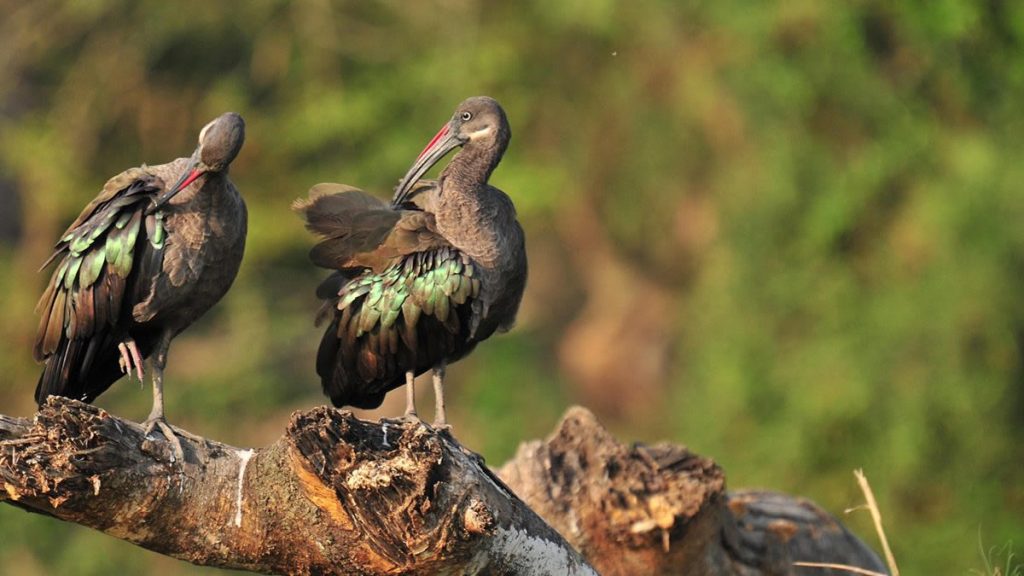
It is also important to familiarize oneself with the terrain before embarking on any bird watching adventure in Bwindi Impenetrable National Park. Since much of the park consists of forested mountainsides and valleys, those who go out exploring should be sure to wear good hiking shoes and bring along plenty of water for hydration while trekking through challenging terrains. Additionally, it is wise to bring insect repellent due to occasional swarms of mosquitoes at certain areas within the park.
When visiting Bwindi Impenetrable National Park for bird watching purposes, it is beneficial to arrive early in order to take advantage of optimal light conditions when searching for birds by sight or sound. Furthermore, visitors may find success by using both active and passive search techniques; actively seeking out birds by searching their habitats while remaining still in one spot can be effective in spotting birds that might not have been visible otherwise.
With careful preparation and thoughtful consideration given to these tips prior to visiting this beautiful destination, anyone will be able enjoy an unforgettable experience filled with rewarding sights and sounds of nature’s feathered friends!
Frequently Asked Questions
How long does it take to get to Bwindi Impenetrable National Park?
Getting to Bwindi Impenetrable National Park can take anywhere from an hour and a half to three hours, depending on the starting point. Most travelers will begin their journey in Kampala or Entebbe by taking a bus or renting a car.
Once inside the park, visitors should be prepared for rugged terrain and challenging hiking as they look for some of the over 25 species of birds that inhabit it.
The experience of bird watching in Bwindi Impenetrable National Park is one that is both rewarding and unforgettable.
Are there any restrictions on bird watching in the park?
Bird watching is an activity that can be enjoyed in many areas, and restrictions are often put in place to protect both birds and bird watchers.
Bird identification is important for bird watchers, as it allows them to distinguish between protected species and other birds.
Restrictions may include limits on where and when bird watching activities can take place, as well as prohibitions against disturbing nesting sites or using disruptive equipment such as audio recordings.
While these restrictions vary depending on the location, they exist to ensure that both the birds and the bird watchers have a safe and enjoyable experience.
What is the best way to approach the birds without disturbing them?
Bird watching is a popular activity that involves observing birds in their natural habitats. Spotting techniques and bird identification are two important considerations when attempting to approach a bird without disturbing it.
Careful observation of the bird’s behavior should be conducted first, with an emphasis on understanding the territorial boundaries of the bird and its nesting space. It is also recommended to move slowly, as sudden movements can often startle a bird and cause it to fly away.
If possible, use binoculars or a spotting scope instead of walking closer as this allows for closer observation while keeping distance from the bird itself. Additionally, using camouflage or muted colors may help keep from alarming the birds in your vicinity.
Is there any accommodation available nearby?
When considering accommodation near Bwindi Impenetrable National Park, there are a variety of options available. Costs involved will vary depending on the type of accommodation chosen.
The most common types of accommodation are lodges, campsites and hotels. Lodges provide quality accommodation with private rooms and bathrooms as well as access to communal areas such as dining halls and lounge areas.
Campsites offer basic facilities such as fire pits and picnic tables at a lower cost than lodges or hotels but don’t include any indoor amenities like bathrooms or showers.
Hotels provide comfortable lodging with multiple services including restaurants, bars and other leisure activities all in one location.
Are there any guided bird watching tours available?
Guided bird watching tours can provide a valuable insight into the wonders of avian life. Expert guides are able to offer advice on binocular selection, as well as share their knowledge of bird migration patterns and other interesting facts.
Tours will likely involve a range of activities such as listening for birdsong or observing from hides, and may take place across several hours or even days depending on the individual tour operator’s arrangements.
Allowing for assistance from an experienced guide can be an invaluable way to gain a greater understanding and appreciation of the fascinating world of bird watching.
Conclusion
Bird watching in Bwindi Impenetrable National Park is a rewarding experience and an exciting way to explore the natural beauty of this unique area. With over 350 species of birds, the park offers plenty of opportunities for bird lovers.
It is best to visit during the dry season when most bird species are present as well as migratory birds that come from other parts of Africa and beyond. The variety of habitats found in Bwindi makes it an ideal spot for birdwatchers, who can enjoy watching many different species in their natural environment.
To get the most out of your trip, it is important to have good quality binoculars and a field guide, as well as practice patience and observe carefully while keeping disturbance to a minimum. By taking these steps, visitors will be able to appreciate the diverse avian life that inhabits this remarkable national park.


